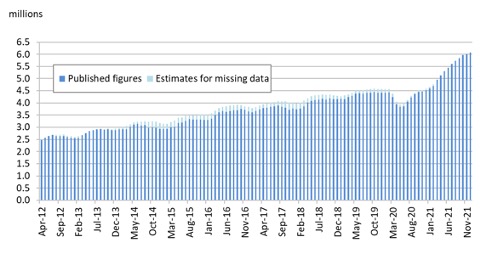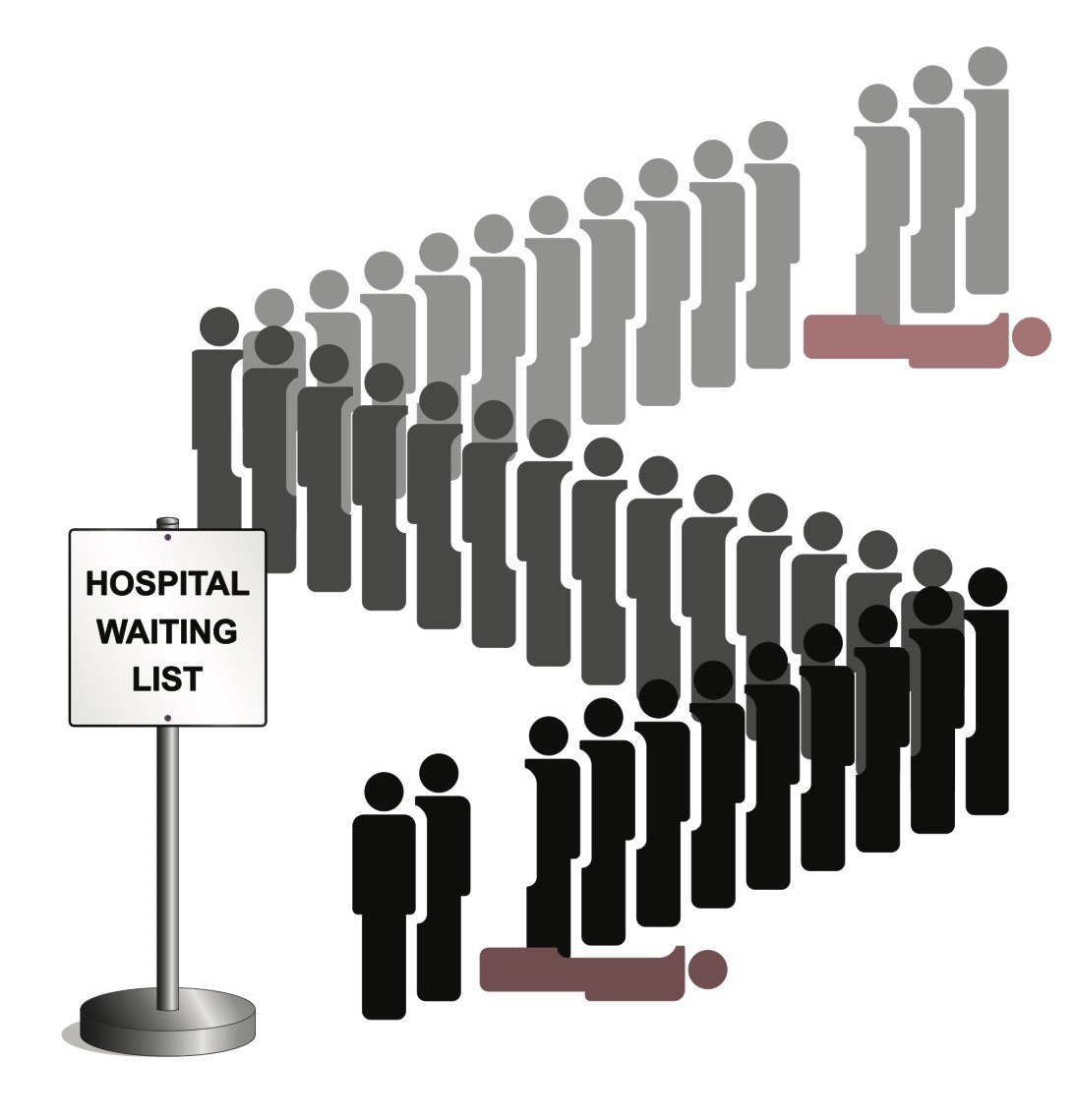Includes over 700,000 patients waiting for orthopaedic surgery
 How the numbers waiting have increased (See graph showing the numbers of patients who have been referred for treatment, but have not been seen. This number is known as the RTT or referral to treatment).
How the numbers waiting have increased (See graph showing the numbers of patients who have been referred for treatment, but have not been seen. This number is known as the RTT or referral to treatment).
Out of the 6.1 million patients, over 700,000 are awaiting trauma and orthopaedic operations, nearly half a million women waiting for gynaecological procedures and close to 300,000 patients waiting due to heart conditions.
The latest data show:
-
At the end of December 2021, 63.8% of patients waiting to start treatment were waiting up to 18 weeks. The accepted standard is 92%.
-
The number of RTT patients waiting to start treatment at the end of December 2021 was 6.1 million patients. Of those, 310,813 patients were waiting more than 52 weeks.
-
For patients waiting to start treatment at the end of December 2021, the median waiting time was 12.5 weeks. The 92nd percentile waiting time was 43.4 weeks.
-
During December 2021, 1,427,778 patients started a new RTT pathway (new RTT periods or clock starts).
-
During December 2021, 225,912 RTT patients started admitted treatment and 946,030 started non-admitted treatment (completed pathways).
less than half of the public are aware that they can choose where they receive their NHS treatment, including in the independent sector
Responding to the NHS performance figures out today, David Hare, Chief Executive of the Independent Healthcare Providers Network, said: “This week saw the welcome publication of the NHS’ elective recovery plan but with today’s figures showing yet another record NHS waiting list of 6.1 million, it’s vital that those commitments are now translated into concrete action which swiftly improves patients’ access to care."
He goes onto say, “As the recovery plan makes clear, the independent sector has a key role to play in providing desperately needed capacity to the NHS, and we now need to see local areas turbo-charging their use of the sector to increase activity and bring down waiting times. Independent sector capacity available to the NHS is still going unused in many parts of the country and this needs to urgently remedied if access to NHS care is to be improved.
“We also need concrete action from the Government to empower patients to take control of their care. The recovery plan includes much-needed commitments to bolster patient choice rights but currently less than half of the public are aware that they can choose where they receive their NHS treatment, including in the independent sector. There must now be a real drive in the NHS to ensure the public are given all the information so they can make the best decisions about their care.
“Tackling the elective backlog is the public’s number one priority for the NHS and people will now want to see the Government urgently stepping up its efforts and do all it can to stop waiting lists getting out of control and improve patients’ access to care.”








